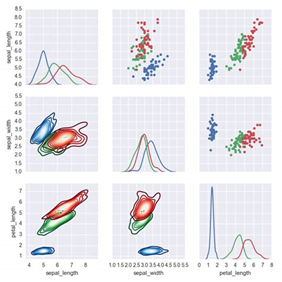Data is a tool, an asset for making a better decisions which can be act as a supreme driver of business value. Now a days, Python is one of the fastest growing programming languages. With the help of this programming language, we can easily do the followings —
- Data manipulation with Pandas,
- Creating fabulous visualizations with Seaborn, or
- Scaling Analytics, Deep Learning and AI Data model with TensorFlow,

So, we can trust on the Python language which seems to have a tool for everything.
In the current era, the volumes of data generated continue to grow at a rapid pace across structured, semi structured, and unstructured data types that businesses are now able to store and need to analyze.
Few years back, Cloud Technology was considered an optional technology environment but now a days, it is the foundation for modernizing data management and most of the organizations use cloud services or infrastructure widely in their data architecture.
Pandas is a Python package that provides fast, flexible, and expressive data structures designed to make working with structured like tabular, multidimensional, potentially heterogeneous and time series data both easy and intuitive. It aims to be the fundamental high-level building block for doing practical, real world data analysis in Python.
OS comes under Python’s standard utility modules. This module provides a portable way of using operating system-dependent functionality. os.listdir(‘your_path’) will list all content of a directory
NumPy is a library for the Python programming language, adding support for large, multi-dimensional arrays and matrices, along with a large collection of high-level mathematical functions to operate on these arrays.
SQLite3 can be integrated with Python using sqlite3 module, which provides an SQL interface compliant with the DB-API 2.0 specification described by PEP 249. You do not need to install this module separately because it is shipped by default along with Python version 2.5.x onwards.

Seaborn is a Python data visualization library based on matplotlib. It will be used to visualize random distributions and provides a high-level interface for drawing attractive and informative statistical graphics.
Matplotlib is a comprehensive library for creating static, animated, and interactive visualizations in Python, and its numerical mathematics extension NumPy. It provides an object-oriented API for embedding plots into applications using general-purpose GUI toolkits like Tkinter, wxPython, Qt, or GTK.

Note:
1. Seaborn supports Python 3.7+ and no longer supports Python 2.
2. TensorFlow now supports Python 3.5.x through Python 3.8.x, but you still have to use a 64-bit version.
To learn more, please follow us -
http://www.sql-datatools.comTo Learn more, please visit our YouTube channel at —
http://www.youtube.com/c/Sql-datatoolsTo Learn more, please visit our Instagram account at -
https://www.instagram.com/asp.mukesh/To Learn more, please visit our twitter account at -
https://twitter.com/macxima








